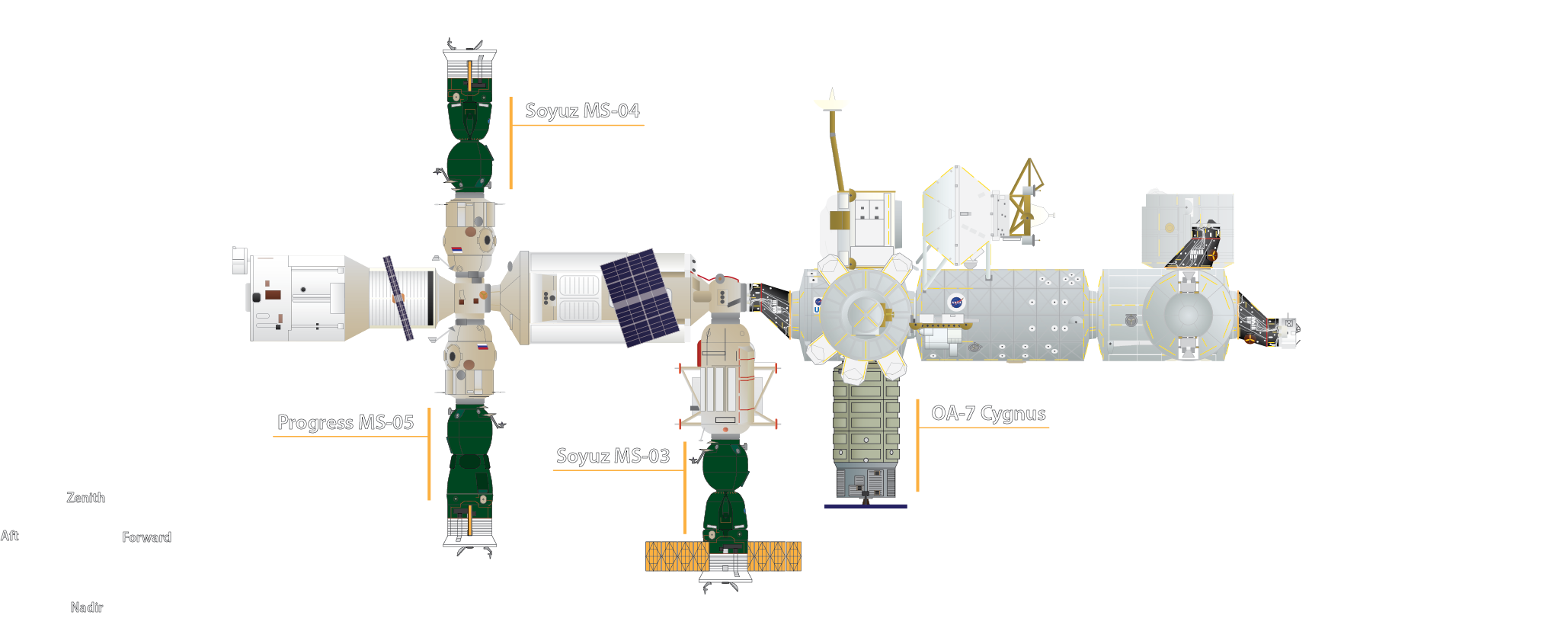S.S. John Glenn OA-7 Cygnus berthed to ISS
/After a four-day cruise to the International Space Station, Orbital ATK’s OA-7 Cygnus spacecraft, named S.S. John Glenn, was captured and berthed to the outpost.
Capture of the 6.4-meter long spacecraft by the station’s robotic Canadarm2 came at 6:05 a.m. EDT (10:05 GMT) April 22, 2017. Expedition 51 Flight Engineer Thomas Pesquet of the European Space Agency as well as Commander Peggy Whitson of NASA were at the Robotics Work Station in the Cupola window controlling the arm.
“The crew of Expedition 51 would like to congratulate all the teams at NASA, Orbital ATK, and the contractors for a flawless cargo delivery mission,” Pesquet said over the radio to the ground. “We’re very proud to welcome aboard the S.S. John Glenn.”
Pesquet said the more than three tons of pressurized cargo in the Cygnus spacecraft will be put to good use by Expedition 51 in its mission of research, exploration, and discovery.
“Achievements like this are the fruit of the hard work of space agencies and private companies and international cooperation across the world, and are what truly make the ISS such a special endeavor at the service of all mankind,” Pesquet said.
Over the next 2.5 hours, ground teams remotely commanded the arm to move the spacecraft to just below its berthing point below the Earth-facing port of the Unity module. Then the outpost crew took over for the final precise arm movements to guide the berthing mechanism to the proper point for latching. At 8:39 a.m. (12:39 GMT), Cygnus was officially berthed to the ISS.
Once leak checks are completed later today, the hatch will be opened and the crew will begin the process of unloading the cargo.
Cygnus launched on April 18 atop an Atlas V 401 rocket from Cape Canaveral Air Force Station’s Space Launch Complex 41. It is carrying with it some 3,400 kilograms of cargo, crew supplies, and experiments.
The cargo aboard Cygnus includes many new experiments such as the Advanced Plant Habitat, which is a fully enclosed, environmentally controlled compartment that will be used to perform plant bioscience research. The container box is 45 centimeters on each side and is covered by a plastic top.
Also on board is the Magnetic 3-D Cell Culture for Biological Research in Microgravity investigation. As the name suggests, it will test magnetized cells as well as tools that might make it easier to handle cells and cultures.
Another experiment is SUBSA, or the Solidification Using a Baffle in Sealed Ampoules investigation. It is designed to study the processes involved in semiconductor crystal growth.
Cygnus is expected to remain berthed to the outpost for about three months. In July 2017, the spacecraft will be unberthed in a reversal of the process used to attach the freighter. After it is released by the robotic arm, it will move away from the ISS.
During the week after Cygnus’ ISS mission, a remotely conducted experiment called SAFFIRE III will be performed. The is the third in a series of fire experiments designed to understand how flames spread in microgravity.
The April 22 berthing comes less than two days after a two new crew members launched to the ISS. In a six-hour fast track to the outpost, Flight Engineers Jack Fischer and Fyodor Yurchikhin launched to, rendezvoused with, and docked with the Poisk module of the station.
Video courtesy of NASA
NOTE: While this article was written by Derek Richardson, it was originally published at SpaceFlight Insider. Feel free to head over there to read all the stuff they write about!




